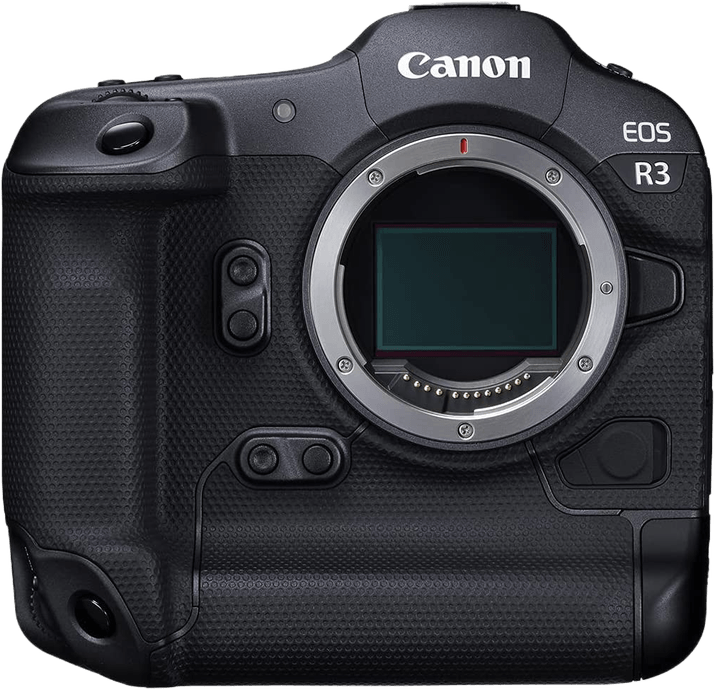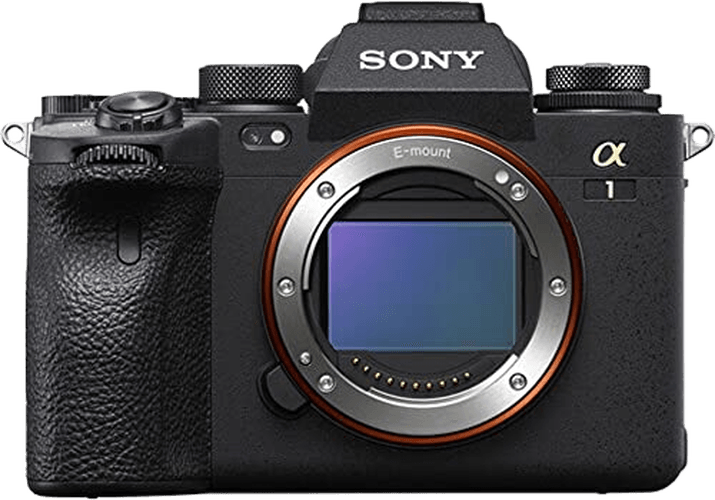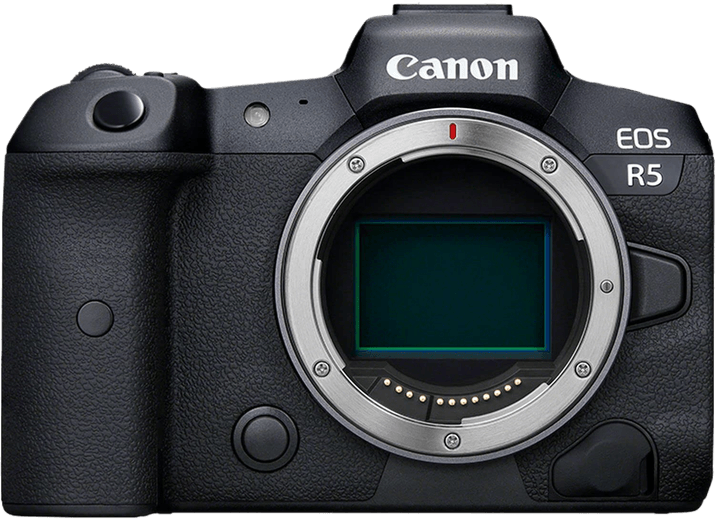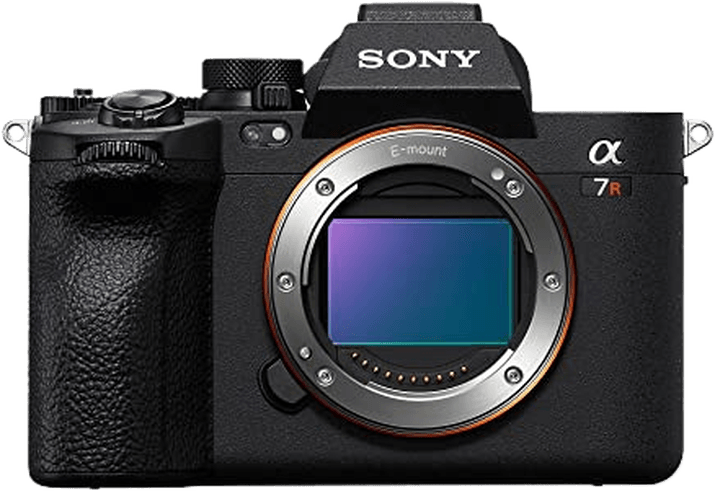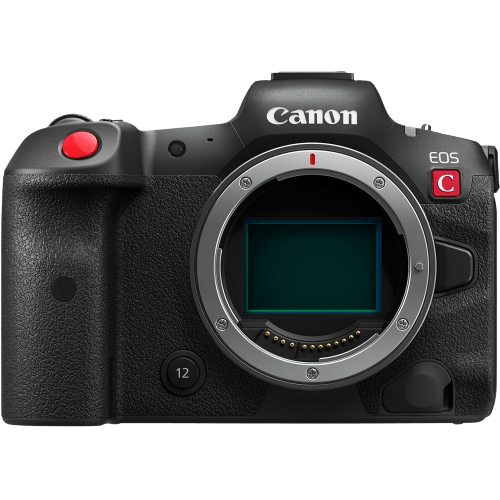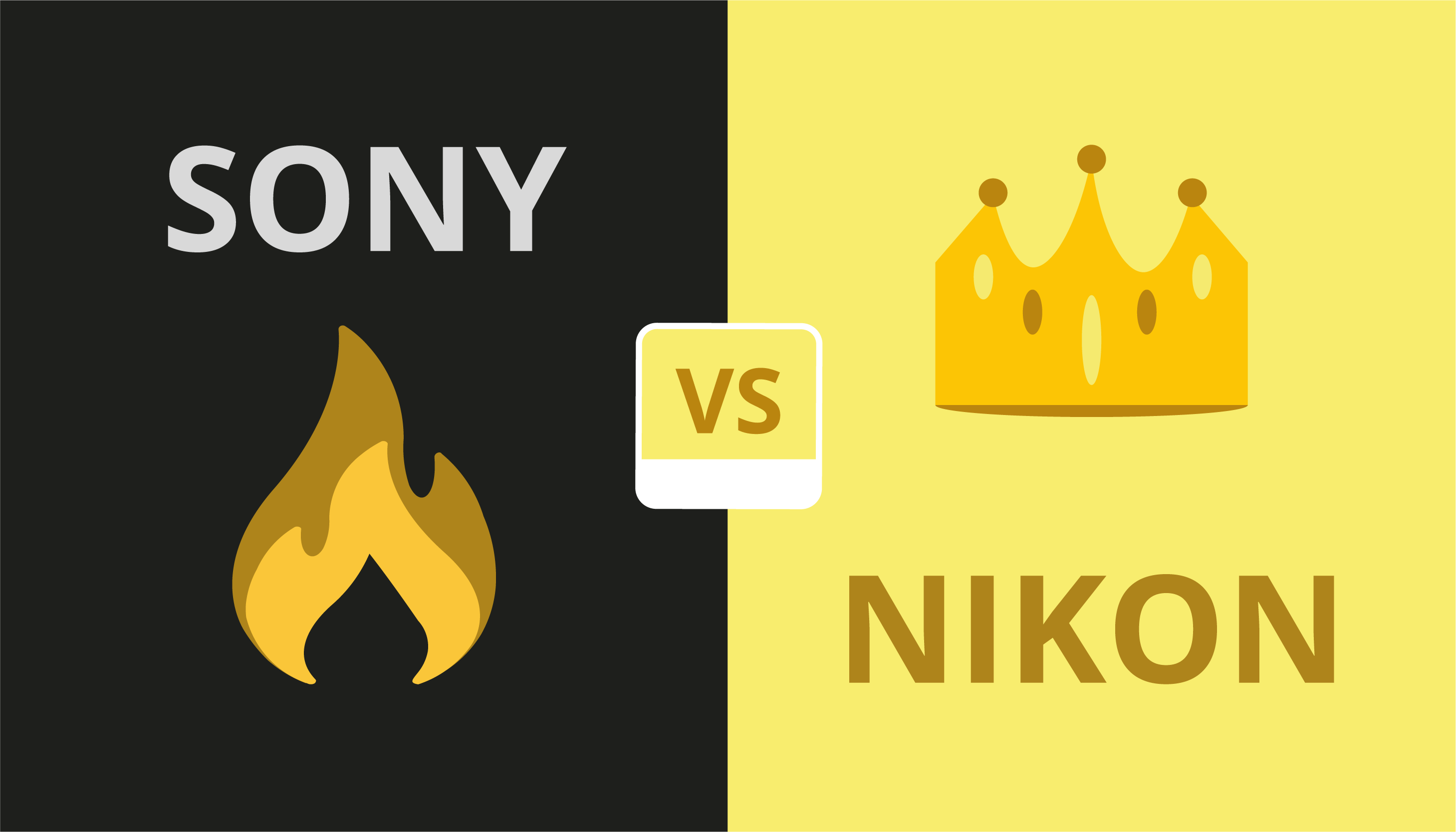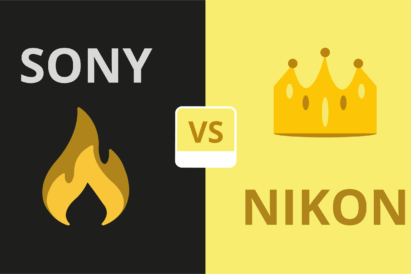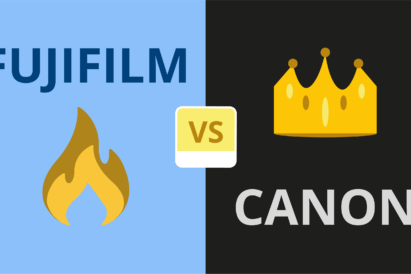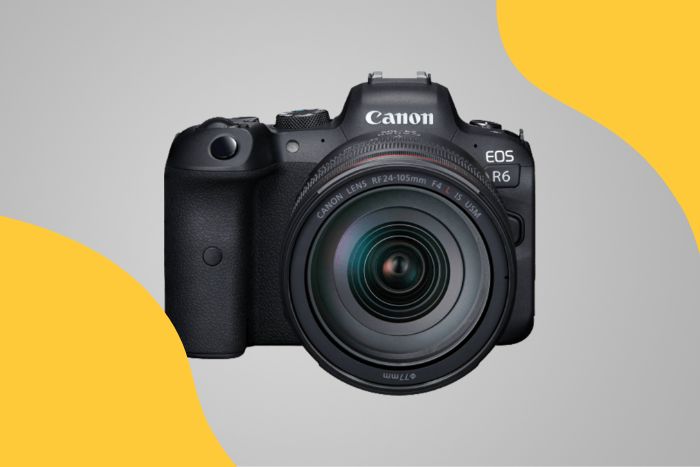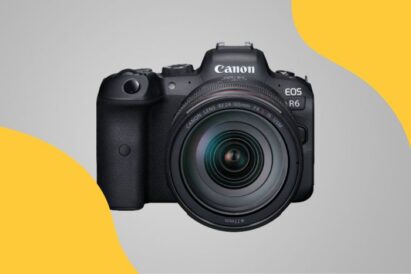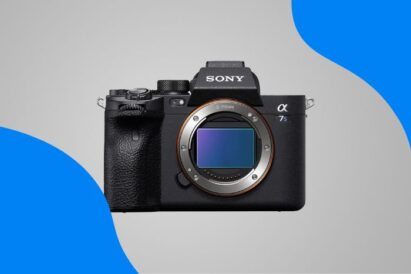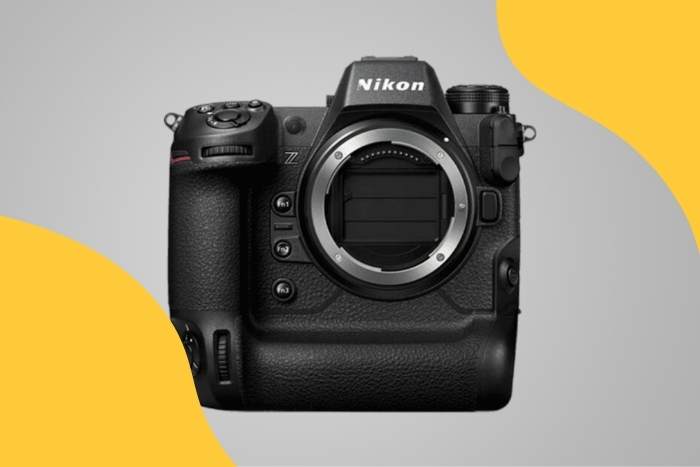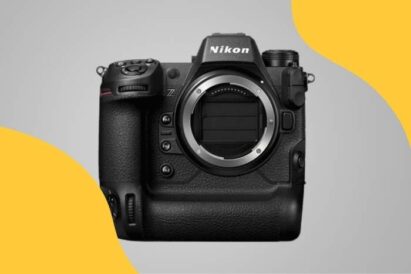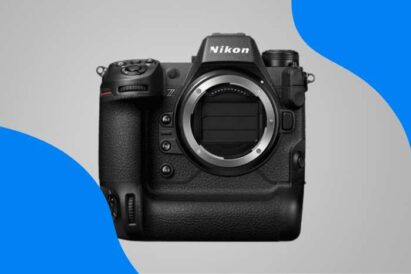This article focuses on Canon vs Sony mirrorless cameras. I will talk a little bit about the history of both companies. And then I’ll get into their range of mirrorless cameras and what they can and can’t do.
When I bought my first DSLR, a friend worked as a commercial photographer. They recommended Canon or Nikon. And I chose Nikon. But that was because I didn’t want to buy a new camera from a camera brand that made photocopiers!
That wasn’t great reasoning. But it didn’t really matter in those days. Canon and Nikon were the best camera manufacturers. And their models were far ahead of the competition. Now, Sony is much more competitive. It has a wide range of mirrorless cameras for both enthusiasts and professionals. So how does Sony stack up to Canon mirrorless cameras?

What is Canon?
Canon is known as a camera company. It’s been around since Precision Optical Instruments Laboratory was founded in 1933. It’s now a multinational corporation based in Ota, Japan. And it makes a wide range of products, including the following:
- Canon cameras
- Canon lenses, flashes, and binoculars
- Canon inkjet and laser printers
- Canon scanners
Canon is active in just about every major camera niche. This includes APS-C and full frame DSLRs, and mirrorless cameras.
They also innovate regularly and constantly bring out new models with new features. One such camera is the Canon EOS R3 with Eye Control AF (autofocus).
As a result, Canon is number one for digital stills camera sales, full frame camera sales, and lens sales in the USA. (This is based on NPD data for 2021).
In Japan, Canon has a 59.8% share of the DSLR market. And they have a market-leading 34.1% share of compact cameras (based on BCN data for 2021). So they are a trusted brand.
What is Sony?
Sony was founded in 1946 in Tokyo, Japan. It’s now a multinational conglomerate based in Minato. As well as digital cameras, it produces a wide range of consumer products. These include the PlayStation and flat-screen TVs.
It has several different business units. And these are a few of them:
- Sony electronics
- Sony imaging and sensing
- Sony pictures and music
Sony entered the DSLR market in 2006. It bought the camera business of Konica Minolta. It was the first company to produce a full frame mirrorless camera with the Sony a7 in 2013.
Sony has designed competitive products at competitive prices. And this has helped it steal the market share from Canon. Its great strength now is its mirrorless range, including the flagship Sony a1. (Read our a1 review.) It’s also a trusted camera brand.
Canon vs Sony Mirrorless: Which is Better?
Mirrorless cameras now represent the largest segment of the market. This is measured in units shipped (38%) and by value (67%). Canon sells more mirrorless cameras than any other manufacturer. But Sony is the number one mirrorless camera brand based on US sales value.
Sony is also the number-one full frame mirrorless camera brand… for an eighth consecutive year! In fact, nobody else was making mirrorless cameras from 2013 to 2018! Sony also claims to be the number one mirrorless lens brand. But that’s based on an unpublished analysis of the NPD data. Sony also says the a7 III was the best-selling mirrorless camera in the US in 2021.
Based on BCN data for Japan, Sony has 32% of mirrorless camera sales, compared to 28.2% for Canon. It also comes second to Canon in “integrated” (i.e., compact) cameras, with a 23.1% share. But Sony camera sales in this segment are growing while Canon’s are falling.
Canon vs Sony Mirrorless Camera Lenses
Sony has been selling full frame mirrorless cameras since 2013. And it also lets third-party manufacturers produce native lenses for the E-mount. But Canon uses patents to block third-party companies from making mirrorless RF-mount lenses.
As a result, there are far more Sony lenses on the market for APS-C and full frame mirrorless cameras. For example, there are 187 possible lenses you can buy for the Sony a7R V. But there are only 35 for the Canon EOS R3.
Canon is catching up, though. And there’ll be more and more Canon lenses coming out for the RF-mount in the next few years. Some people also say Sony only makes cheaper lenses for amateur photographers and expensive lenses for pros… but not much in between!
Feature-by-Feature Comparison
In general, Canon models likely offer better handling, weather sealing, and durability. But Sony cameras have better overall specifications.
The flagship Sony a1 offers outstanding performance in all areas. If you want a top-of-the-line Canon? You must choose between resolution and frame rate (Canon EOS R5 vs Canon EOS R3).
Sony also adds its latest features to mid-range models like the a7R V. But Canon’s Eye Control AF only appears on the Canon EOS R3, which is much more expensive.
Image Quality
Sony’s stacked sensors provide high image quality and good low-light performance. The high readout speed helps get rid of rolling shutter. And it lets the camera shoot at a high frame rate.
In fact, Sony sensors are so good that Nikon often uses them for their top-of-the-line camera,s such as the D850. But Canon designs and makes its own sensors. And the company is rapidly closing the gap. Yet the R5 still struggles in dimmer light.
Both companies offer excellent image quality in APS-C and full frame cameras. But Sony’s new a7R V comes with a 61 MP full frame BSI-CMOS sensor. It offers the best resolution of any mirrorless camera (unless you go for a medium format model). That’s an ideal platform for landscape or studio photography.
Another difference between the sensors is color rendition. This is a matter of taste… Sony color tends to be more accurate and neutral out of the box. But greens are slightly over-saturated and darker.
Canon colors tend to be more vivid with a slight reddish cast. Greens are shifted yellow, and blue skies are more saturated and darkened a bit. Many people swear by “Canon color.” But it’s worth checking a few sample images if that matters to you.
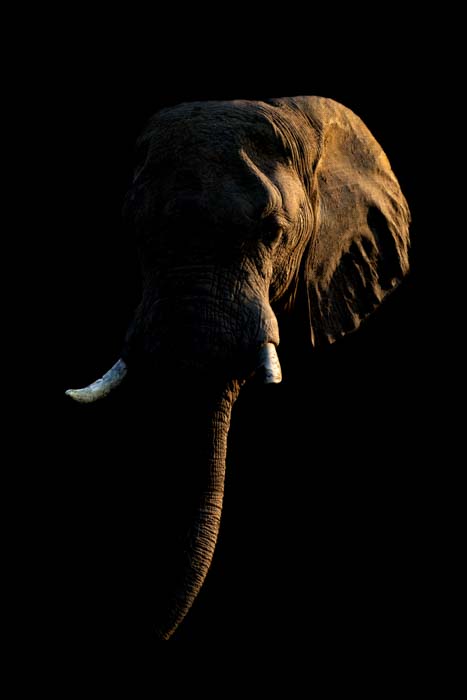
Autofocus (AF)
Sony mirrorless camera AF has revolutionized what’s possible in wildlife photography. The flagship Sony a1 offers a selection of focus areas. There’s everything from wide (covering the whole frame) to zone (around a sixth of it). And there are various spot options. You can also use each of them in tracking mode.
Also, the camera can recognize the eyes of people, animals, and even birds. It “knows” that it needs to track the subject’s eyes—even outside the focus area! That makes the autofocus system simple and effective. And you still have options to adjust the “stickiness” if you wish.
The new a7R V goes even further by adding a new AI processor for even faster autofocus performance. It now offers recognition and tracking for vehicles, trains, airplanes, and insects!
Yet Canon’s Dual Pixel CMOS AF sensors can use every pixel for image capture and autofocus. In this respect, Canon’s Dual Pixel Autofocus is better than Sony’s. The R3 has 1,053 focus points covering the entire sensor. But the a1’s AF area only has 759 focus points covering 92% of the frame.

Frame Rate and Buffer
The readout speed of the Sony sensors is exceptional. It enables the a1 to achieve the phenomenal RAW frame rate of 30 frames per second (fps). That’s without any noticeable rolling shutter effect.
The Canon EOS R3 matches that, only with 24.1 megapixels of resolution. But a recent firmware update (version 1.2.0) lets the R3 take 2 to 50 images at anywhere from 30 fps to 195 fps!
It works with RAW and JPEG files. But the only drawback is that you must lock exposure and autofocus. So it’s not ideal for moving subjects. At such high frame rates, the buffer depth becomes crucial.
At its launch, the a1 had the slight advantage of taking 155 RAW images versus 150 for the R3. But the a1’s RAW format was “lossy compressed.” And the recent firmware update means the R3 can now take up to 597 C-RAW (compressed RAW) pictures. That’s a huge improvement!
Canon vs Sony Mirrorless Image Stabilization
Canon has traditionally been better at image stabilization. But Sony is fighting back. Canon bodies offer up to eight stops of in-body image stabilization (IBIS).
The Sony a1 is not as good at only 5.5 stops. But the a7R V can match Canon’s figure. Shooting video footage on the a7R III or IV shows the limitations of the Sony IBIS system. So Canon is still (just) in the lead.

Handling
Handling is one area where Canon has the advantage. Canon bodies generally feel more comfortable in your hands.
Canon cameras are also more durable in harsh environments with better weather sealing. On a recent trip to Botswana, my a1 slipped off the front seat and hit a metal bar. That cracked the rear screen and ripped off the rubber eyecup. That cost me a cool $350!
Battery Grip
My Sony a1 is fine with the battery grip. But shooting without it for three weeks in Botswana gave me blisters on several fingers!
One thing that might make a difference in your choice is the presence of an integrated grip. Canon bodies often have this. But none of the Sony bodies do. That means you have to buy a battery grip as an optional extra.
It’s a matter of personal taste. But I like the flexibility of shooting handheld without the grip to save weight. If I’m shooting in continuous mode with my a1, I really don’t need the extra battery.
Rear Screens
Canon bodies also tend to have fully articulated rear screens. These are handy for videography and taking selfies. The Sony a1 only has a small, low-resolution rear LCD. It tilts up and down rather than rotating or flipping out.
But the new fully articulated flip-out rear LCD on the a7R V is a game-changer for Sony mirrorless cameras. I’m stuck with the Sony a1’s tilting 3-inch screen. And it’s a pain sometimes… especially if you want to vlog or take selfies!
Viewfinders
The only area where Sony has the edge in handling is the electronic viewfinder (EVF). The a1 and a7R V have 9437k-dot EVFs with magnifications of 0.9x. They offer exceptional brightness and clarity.
The first time I used it, I forgot it wasn’t an optical viewfinder! This blows the R5’s EVF out of the water as it only has 5760k dots and a magnification of 0.76x.
Video
Canon mirrorless cameras have traditionally been excellent for videography. But they’ve had a few problems with overheating in the last few years.
This led to a recording limit of 30 minutes for high-quality video formats. Yet the cooldown time was still an issue.
The Canon EOS R5 C solved this problem by adding an active cooling system to the back of the R5 camera body. But that meant there was no room for IBIS.
So you have to make do with electronic image stabilization and the resulting image crop. Also, battery life is little more than 30 to 40 minutes anyway. So there’s still a bit of work for Canon to do!
Sony cameras don’t have the same overheating issues. And they’re still capable of 8K video and high frame rates.
The a1’s highest video resolution (7680 x 4320) is slightly less than the Canon EOS R5 C (8192 x 4320). But it can still produce 8K footage. It can also shoot at 240 fps, compared to the 120 fps limit on the R5 C.
Other Sony Mirrorless Features
Here are a few more comments on Sony mirrorless cameras based on my experience with the Sony a1:
- If you use two cards on the Sony, you can use one for overflow. But then you can’t seamlessly view images from both cards. You have to take one out or swap it to Slot 1!
- Battery life can be a problem with mirrorless cameras due to the EVF. But my Sony a1 can manage thousands of images on a single charge. That’s way beyond the official CIPA rating of 430 shots using the viewfinder.
- The Sony menu system used to get a lot of flak. But the new updated format is a lot simpler and more logical.

Our Verdict
Overall, this Canon vs Sony mirrorless comparison shows Sony has a slight edge. That may be because I’ve had far more experience with Sony cameras since I bought my two a1s. But that cuts both ways. I’ve discovered plenty of faults as well as virtues. And I’m sure I’d do the same if I had a Canon!
Sony has more experience in the mirrorless market. And this has led to more innovation and more lenses. I’m always amazed by the image quality of the Sony a1. Sony’s autofocus system has been the gold standard for a while now. That’s still true despite the full frame autofocus zone of Canon’s Dual Pixel AF… and the ground-breaking Eye Control AF on the R3!
Look at the flagship interchangeable lens cameras of both brands. You can see the difference. The Sony a1 is equal to or better than the R3 or R5 in sensor resolution, eye detection and tracking, and RAW frame rate. The Canon EOS R3 has a better buffer size. But the a1 offers the best of both worlds. It doesn’t force you to make a difficult trade-off between megapixels and frame rate as Canon does.
The only areas where Canon cameras have a clear advantage? They are better in handling, weather sealing, and durability. But technological progress is a constant in the camera market. Sony responded to the competition by bringing better eye detection and a flip-out LCD. I’m sure the next top-end Canon camera will bring similar advances. We’ll have to wait and see!
If you’re still unsure which camera brand to choose, try our articles debating Fujifilm vs Sony, Fujifilm vs Canon, or Fujifilm vs Olympus next!


